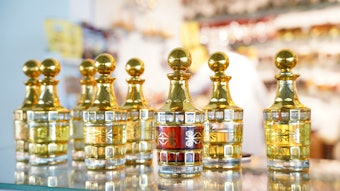At 4.7%, growth in the hair care market fell below the industry average of 5.0% in 2014, but the good news is this increased from 4.5% in 2013 in all regions except Asia-Pacific and Western Europe. Latin America accounted for 45% of the global growth in hair care, thanks to Brazil. The fact that North America is improving is also good news since, regionally, it ranks highest in terms of per capita spending on hair care.
Shampoos and conditioners, in particular, accounted for more than 60% absolute growth in hair care globally. Targeted offerings with pronounced health and beauty benefits helped to drive growth in these categories. While efficacy in the form of targeted solutions is increasing in importance, hair care continues to be mass-orientated as consumers show a greater preference for value products. Going forward, success will continue to involve combining mass offerings with efficacy.
Health Focus Inspires New Product Forms
Increasingly, hair care products are incorporating sophisticated solutions to help create healthy looking hair. These generally address damaged and limp hair-but also provide scalp health benefits. In fact, providing nourishment to the scalp is said to help strengthen hair follicles and contribute to healthy and strong hair. Thus, a greater number of shampoos and conditioners now include rare and exotic oils to provide nutrition to the scalp. In addition, dedicated formats such as hair masks, serums and other treatments benefit scalp health.
As consumers become more aware of scalp health, opportunities arise for products omitting or reducing ingredients that cause scalp dryness. Sulfates, for example, create lather in shampoos but can strip the hair of its natural oil, adding to the problem of dry scalp. Dry shampoos are therefore positioned as products to alternate with wet shampoos to reduce exposure to sulfates. Some dry shampoo brands even make scalp health claims to reinforce this benefit.
Like dry shampoos, cleansing conditioners are sulfate-free and offer an alternative that can benefit scalp health. Both dry shampoos and cleansing conditioners have strong potential for the Afro hair type, since these consumers tend to have dry scalps and, therefore, could benefit from replacements.
Perms and Relaxers for the Multicultural Space
Perms and relaxers, developed for ethnic and cultural preferences, grew by 7% in 2014-half the 14% pace recorded in 2013, although this peaked after older products were replaced with safer ingredients in Latin America. Most sales in this category are generated in Latin America, the Middle East and Africa, accounting for nearly 80% of global sales. In relation, in order to tap into the expected growth in perms and relaxers, L’Oréal acquired Brazilian company Niely in 2014.
Hair Care Remains a Mass Offering
Despite the increasing focus on functionality and efficacy, hair care growth continues mostly in the mass market, accounting for nearly 90% of global hair care sales. Premium hair care is projected to grow at a slightly faster pace of 2.0% CAGR, compared to a 1.8% CAGR for mass hair care, but in absolute terms, mass hair care is projected to account for 88% of the projected absolute growth in hair care between 2014 and 2019.
Unlike skin care, consumers are less willing to pay a higher margin for hair care, since skin is more closely linked to beauty than hair. The relatively lower margin in hair care, however, can be compensated by boosting volume growth in both developed and developing markets.
Frequency in Mature vs. Developing Markets
Driving volume growth in mature markets is a challenge. However, products launched with sophisticated claims in novel formats have driven value growth in terms of higher unit prices; although these products are designed to add extra steps to the existing beauty routine, thus increasing the frequency of hair care product use.
One such launch is L’Oréal’s Fribrology-an entire range that aims to create fuller-looking hair. It includes shampoos, conditioners, masks, serums and boosters. Using all the products in the range is said to maximize efficacy.
While driving growth in developed markets involves adding new steps to the beauty routine, in developing markets, improved penetration is accomplished by increasing the frequency of shampoo use. In Brazil, the per capita volume of shampoo was 1,022 mL in 2014, compared with 105 mL in India; in markets such as Nigeria and Egypt, the volume per capita use is even lower. Entrenching shampoo use as part of a regular grooming routine in these markets could help to drive volume growth.
Conclusion
Despite efforts to invigorate a relatively mature hair care market, this category continues to under-index the industry average. Value growth in hair care has been hampered by an upwardly inelastic value margin. However, there is hope in untapped zones in emerging markets, where the frequency of shampoo use continues to be low.
Developing a deeper penetration in such markets in addition to tapping into white spaces in developed markets could contribute to the global momentum for hair care growth, and may even help to overtake the industry average.
Editor’s note: To read the original version of this market report, see the June issue of GCI or visit www.GCImagazine.com.










